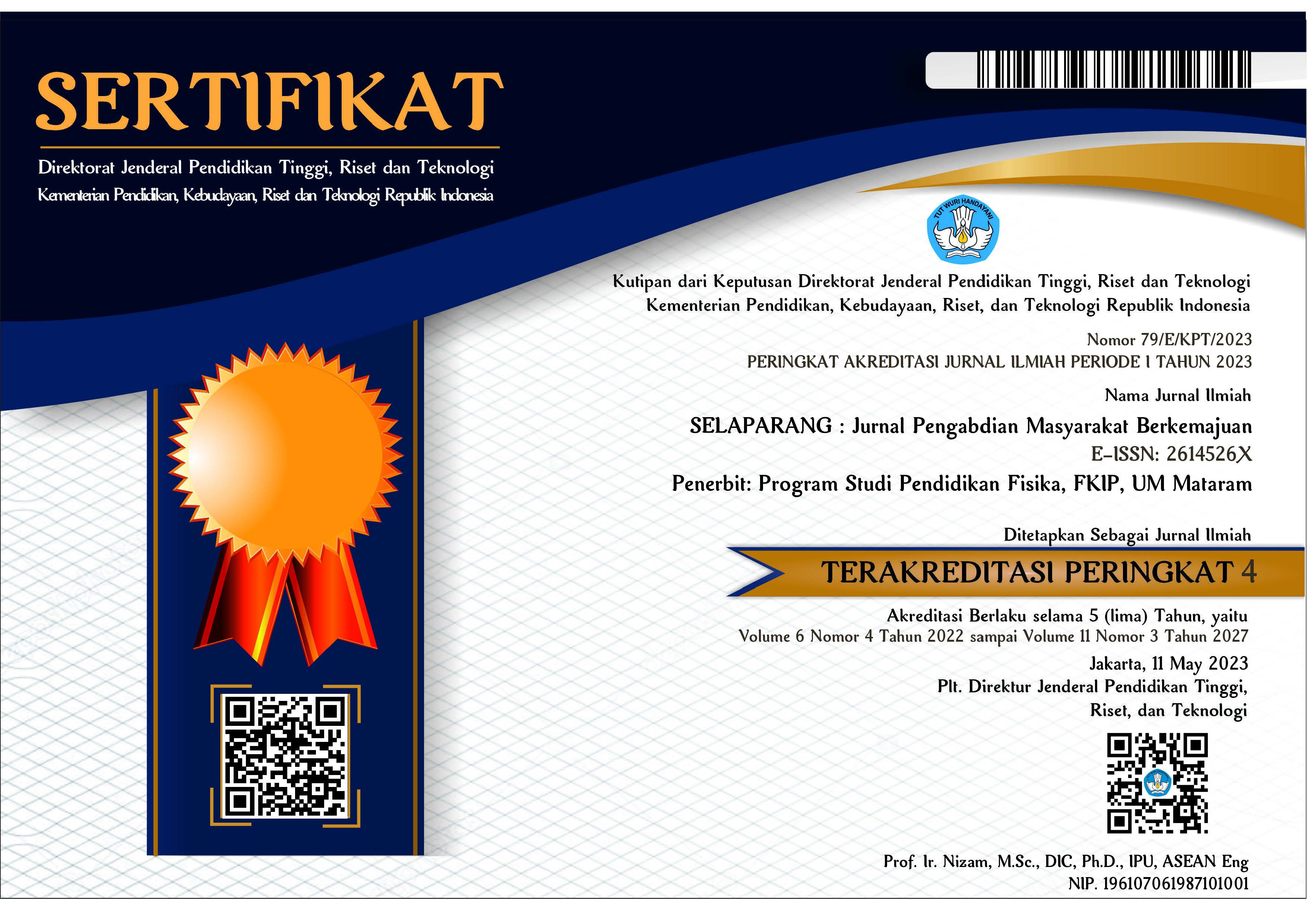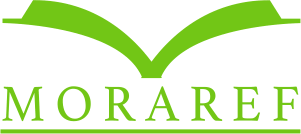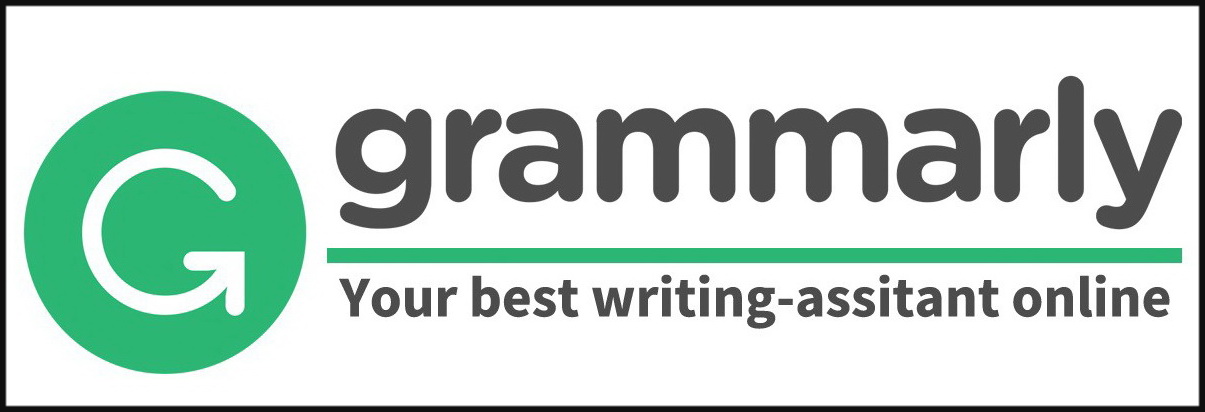Strategi desain dalam revitalisasi kebun binatang bandung: optimalisasi ruang dan fasilitas publik
Abstract
Abstrak
Kebun Binatang Bandung sebagai destinasi wisata edukatif menghadapi berbagai tantangan dalam optimalisasi ruang dan fasilitas publik, seperti minimnya kenyamanan pengunjung, keterbatasan aksesibilitas, dan kurangnya fasilitas edukatif serta elemen ramah lingkungan. Kegiatan pengabdian ini bertujuan untuk merancang strategi desain revitalisasi ruang publik berbasis kenyamanan, edukasi, aksesibilitas, dan keberlanjutan. Metode yang digunakan berupa desain partisipatif melalui observasi langsung, survei kepada 100 pengunjung, wawancara dengan pengelola, serta diskusi kelompok bersama mitra yang terdiri dari komunitas lokal dan manajemen Kebun Binatang Bandung. Evaluasi dilakukan melalui perbandingan kondisi eksisting dengan desain usulan serta tanggapan dari mitra terhadap hasil visualisasi desain. Hasil menunjukkan adanya peningkatan pemahaman mitra terhadap desain inklusif dan ramah lingkungan sebesar 85%, serta peningkatan partisipasi dalam proses perancangan sebesar 70%. Survei pengunjung menunjukkan bahwa 80% berharap adanya zona edukasi yang lebih interaktif, 70% menilai fasilitas edukasi saat ini kurang menarik, dan 65% mengeluhkan sirkulasi ruang yang membingungkan. Implementasi desain mencakup perbaikan jalur akses, integrasi elemen hijau, papan informasi digital, dan ruang istirahat yang inklusif, yang berpotensi meningkatkan kualitas pengalaman pengunjung secara signifikan. Dengan strategi ini, Kebun Binatang Bandung diharapkan menjadi destinasi edukasi yang lebih inklusif, berkelanjutan, dan ramah bagi seluruh pengunjung.
Kata kunci: desain revitalisasi; ruang publik; aksesibilitas; edukasi satwa; keberlanjutan.
Abstract
Bandung Zoo, as an educational tourism destination, faces various challenges in optimizing its public spaces and facilities, such as limited visitor comfort, poor accessibility, and the lack of educational and eco-friendly features. This community engagement project aims to develop a design strategy for revitalizing public spaces based on comfort, education, accessibility, and sustainability. The method involved a participatory design approach through direct observation, surveys with 100 visitors, interviews with zoo management, and focus group discussions with local community members and zoo administrators. Evaluation was conducted by comparing existing conditions with the proposed design and analyzing feedback from stakeholders regarding the visualized outcomes. The results showed an 85% increase in stakeholders’ understanding of inclusive and eco-friendly design, and a 70% increase in their participation during the design process. Visitor surveys revealed that 80% hoped for more interactive educational zones, 70% found current educational facilities unengaging, and 65% experienced difficulties due to unclear circulation routes. The implemented design includes improved access paths, integration of green elements, digital information boards, and inclusive rest areas, all of which significantly enhance the visitor experience. With these strategies, Bandung Zoo is expected to become a more inclusive, sustainable, and engaging educational destination.
Keywords: design revitalization; public space; accessibility; wildlife education; sustainability.
Keywords
Full Text:
PDFReferences
Alexander, C., Ishikawa, S., & Silverstein, M. (1977). A Pattern Language: Towns, Buildings, Construction. Oxford University Press.
Andrianto, A., & Chalik, C. (2021). Perancangan Pembatas Interaksi sebagai Penunjang Kegiatan Bertransaksi di Kasir pada Masa New Normal. Waca Cipta Ruang, 7(1), 46–50. https://doi.org/10.34010/wcr.v7i1.4734
asm atamtajani. (2024). MODEL INOVASI DESAIN PRODUK KERAJINAN BERBASIS BUDAYA LOKAL MELALUI KOLABORASI INDUSTRI Studi Kasus Pengembangan Kerajinan Aksesori di Pasirjambu Kabupaten Bandung Jawa Barat. International Symposium on Environmental Design.
Atamtajani, A., & Chalik, C. (2024). Personality for Different Designers: Temukan Gaya, Ciptakan Karya. Deepublish.
Atamtajani, A. S. M., & Ayu, R. (2019). Exploration of Cow Bone as a Material for Necklace Accessories. 6th Bandung Creative Movement 2019, 161–166.
Atamtajani, A. S. M., & Chalik, C. (2024a). Eksperimen desain: Strategi inovatif dalam penelitian dan pengembangan produk. Tel-U Press.
Atamtajani, A. S. M., & Chalik, C. (2024b). Personality for Different Designers: Temukan Gaya, Ciptakan Karya. Deepublish.
Atamtajani, A. S. M., Firdauzi, G. N., & Yudiarti, D. (2021). Maritime Biota Waste as Eco-Jewelry Materials, Potentials and Possibilities. IOP Conference Series: Materials Science and Engineering, 1098(5), 52030. https://doi.org/10.1088/1757-899X/1098/5/052030
Atamtajani, A. S. M., Masunah, J., & Karyono, T. (2022). Reconstruction of Kamasan Pasir Jambu Crafts Based on Creative Industry. Proceedings of the 4th International Conference on Arts and Design Education (ICADE 2021), 48–54. https://doi.org/10.2991/assehr.k.220601.011
Atamtajani, A. S. M., Narawati, T., & Karyono, T. (2022). Tigero Tedong Jewellery Design Typical Bugis Tribe. Proceedings of the 3rd Borobudur International Symposium on Humanities and Social Science 2021 (BIS-HSS 2021), 29–33. https://doi.org/10.2991/978-2-494069-49-7_6
Atamtajani, A. S. M., & Putri, S. A. (2020). Supplying 2C (Critical and Creative Thinking) Basic Concept as an Effort to Build the Ventures of Vocational School Students in Product Design. Proceedings of the 1st Borobudur International Symposium on Humanities, Economics and Social Sciences (BIS-HESS 2019), 1087–1090. https://doi.org/10.2991/assehr.k.200529.227
Atamtajani, A. S. M., Ramadhan, M. N., & Cantika, N. (2025). Inovasi Desain Produk untuk Meningkatkan Brand CokodidiKids. ViRAL Journal (Visual Innovation, Representation, Arts and Literacy), 1(2), 113–128.
Atamtajani, A. S. M., & Yudiarti, D. (2020). Micro Pave Setting for the Triple Moon Goddess Jewelry Set Designs. Journal of Physics: Conference Series, 1517(1), 12022. https://doi.org/10.1088/1742-6596/1517/1/012022
Chalik, C., & Andrianto, A. (2022). Analisis Warna pada Interior Internet Cafe Fusion Rise. Waca Cipta Ruang, 8(1), 13–22. https://doi.org/10.34010/wcr.v8i1.6545
Chalik, C., Atamtajani, A. S. M., & Andrianto. (2024). Main Mainan Permainan: Teori dan Praktik. Tel-U Press.
Gupta, R., & Mehta, P. (2021a). Visitor engagement in zoo design: Enhancing conservation awareness through interactive spaces. In International Journal of Environmental Design (Vol. 14, Issue 1, pp. 12–29).
Gupta, R., & Mehta, P. (2021b). Visitor engagement in zoo design: Enhancing conservation awareness through interactive spaces. In International Journal of Environmental Design (Vol. 14, Issue 1, pp. 12–29).
Hall, E. T. (1966). The Hidden Dimension. Doubleday.
Hall, E. T. (2020). The Hidden Dimension: Space and Culture in Architecture. MIT Press.
Han, K. T., & Kim, J. H. (2022). The role of biophilic design in enhancing the visitor experience in zoological parks. Environmental Behavior Journal, 56(3), 89–105.
Lee, S. Y., & Park, J. H. (2020). Designing for sustainability in public spaces: Lessons from zoo redevelopment projects. Urban Space Planning Review, 11(4), 112–128.
Lynch, K. (1960). The Image of the City. MIT Press.
of Zoos, W. A., & (WAZA), A. (2021). Best practices in zoo management and visitor experience.
Organization, I. Z. (2022). Zoo design principles for sustainability and visitor engagement.
Sabaryati, J., Viridi, S., Utami, L. S., Zulkarnain, & Isnaini, M. (2022). Developing motion sensor experiments in problem-based learning for students’ HOTS. Proceedings of the 5th International Conference on Current Issues in Education (ICCIE 2021), 80–84. https://doi.org/10.2991/assehr.k.220129.015
Sugiyono. (2014). Metode Penelitian Pendidikan: Pendekatan Kuantitatif, Kualitatif, dan R&D. Alfabeta.
Tuan, Y.-F. (1977). Space and Place: The Perspective of Experience. University of Minnesota Press.
Utami, L. S., Islahudin, I., & Zulkarnain, Z. (2019). Pemanfaatan limbah styrofoam untuk menghasilkan batako ringan sebagai pendukung ketersediaan material rumah anti gempa Desa Gontoran Kecamatan Lingsar Kabupaten Lombok Barat. SELAPARANG: Jurnal Pengabdian Masyarakat Berkemajuan, 3(1). https://doi.org/10.31764/jpmb.v3i1.1278
Wahyudi, A., & Kusuma, P. (2021). Sustainable design in revitalization projects: A case study of urban zoos. Proceedings of the International Conference on Green Architecture, 92–104.
Winarno, A., & others. (2020). Realitas Seni Rupa dan Desain Digital. Sunan Ambu Press.
Yamada, T., & Kuroda, H. (2020). Enhancing urban ecological networks through zoo-based conservation programs. International Symposium on Environmental Design, 55–67.
Yasser, A. A. (2025). Sustainable Design Strategies in Architectural Engineering: A Comprehensive Review. KHWARIZMIA, 1–11. https://doi.org/10.70470/khwarizmia/2025/001
DOI: https://doi.org/10.31764/jpmb.v9i3.30724
Refbacks
- There are currently no refbacks.

This work is licensed under a Creative Commons Attribution-ShareAlike 4.0 International License.
______________________________________________________
Jurnal Selaparang
p-ISSN 2614-5251 || e-ISSN 2614-526X
EDITORIAL OFFICE:



















